SmartMIX Boosts Recycling Content in Balanced Mix Design
BY Doug Carlson
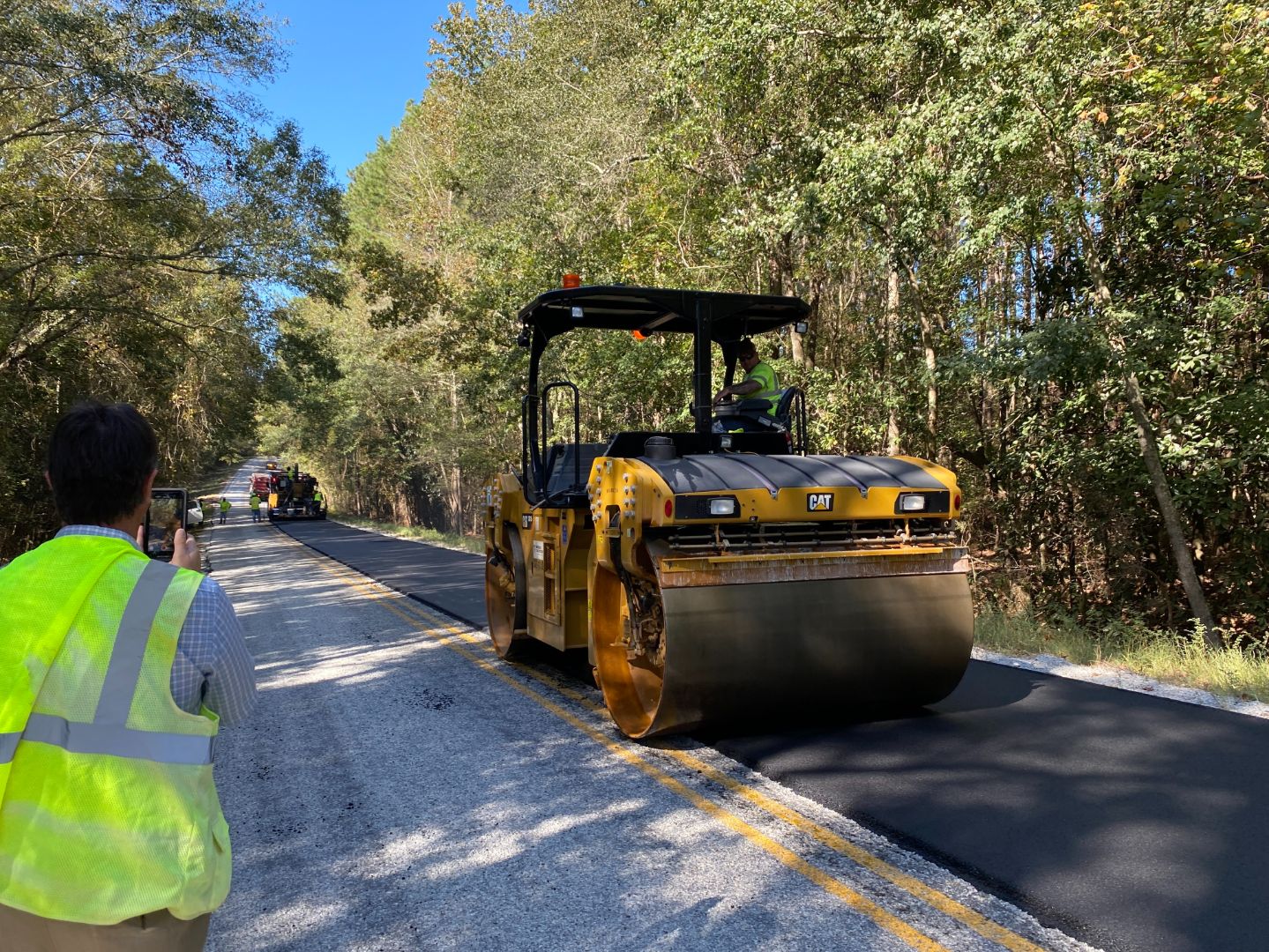
Faced with a market disruption in the county-owned tire recycling operation, a team from Coffee County led by Commission Chairman Dean Smith hit the road to learn more about rubberized asphalt. In September 2019, they went to Mobile, Alabama, to attend the 6th International Recycled Rubber & Plastic Products Technology Conference hosted by the University of Alabama. The conference has leading academia and businesses involved in the scrap tire and rubberized asphalt industries and provided the perfect opportunity to find some answers.
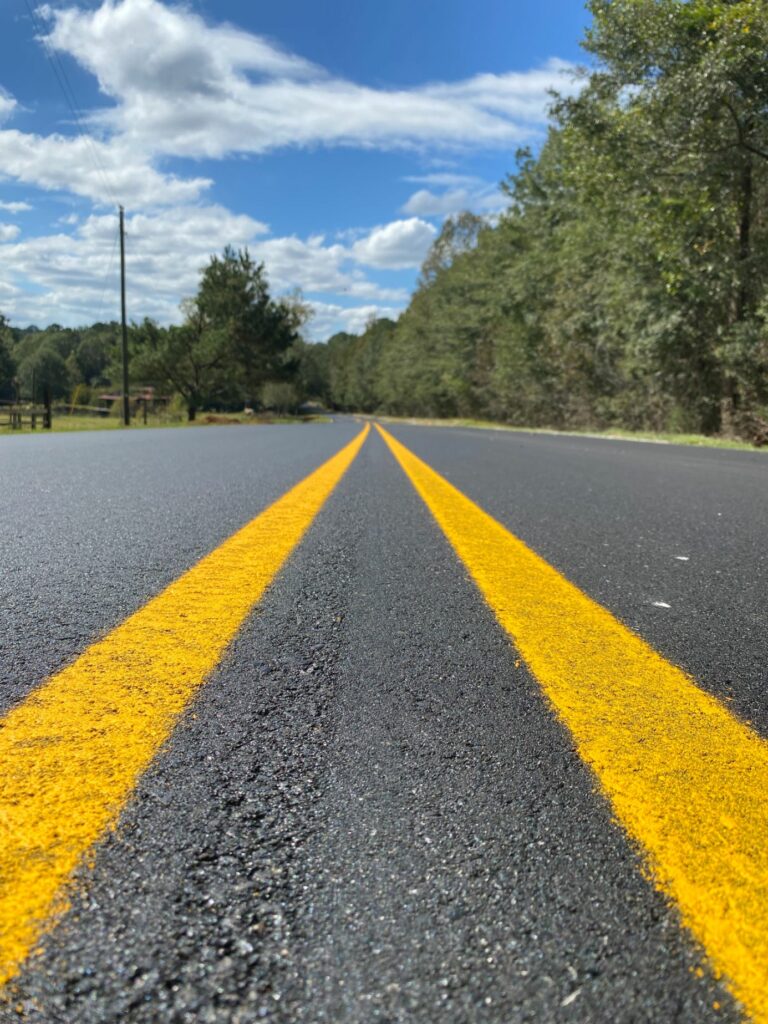
This beautiful mat is made with the balanced mix design of a 12.5 mm mix with 35% RAP and SmartMIX additive. The asphalt content is 5.7% with 1.75 coming from the RAP and 3.95 virgin PG67-22 binder. Photo courtesy of Liberty Tire Recycling
While attending the conference, representatives from Liberty Tire Recycling, headquartered in Pittsburgh, Pennsylvania, and the National Center for Asphalt Technology (NCAT) from Auburn, Alabama, met with the county officials. A few years earlier, Liberty Tire Recycling had developed SmartMIX™, a rubberized asphalt technology designed to facilitate the use recycled tire rubber in asphalt. The group came up with a plan to develop rubberized asphalt markets and help implement the balanced mix design (BMD) specifications in Alabama through a demonstration project using SmartMIX rubber.
The Alabama Department of Transportation (ALDOT) began evaluating the BMD approach in 2015. More recently, it began implementation and field evaluations working with the local governments. In 2019, NCAT helped Geneva and Houston counties develop a higher quality purchase order mix via the BMD. The timing was right, and it was a good fit to use the new BMD specifications and SmartMIX on a Coffee County resurfacing project.
The county wrote a proposal to the Alabama Department of Environmental Management (ADEM) to use the Scrap Tire Marketing Program to help fund the project and monitor the pavement performance over time. Coffee County and NCAT designed an experiment that would compare a standard ALDOT Superpave mix, a BMD mix, and a BMD with SmartMIX on a stretch of County Road 110 between Highway 125 and County Road 105 in October 2020. NCAT will evaluate the performance of the sections every year for six years as a requirement for the grant. The grant also included the development of a one-day BMD training course offered to the prospective contractors, county engineers and other representatives interested in the project prior to the project bidding.
The picturesque County Road 110 would receive the benefits of this asphalt technology.
“We were happy to have the opportunity to get involved in the project,” Dr. Carolina Rodezno said. She is the principal investigator leading the NCAT research project for the county. “The pre-bid training course was a good experience to have going into the project. There was a great dialogue that followed in the Q&A session. We [NCAT] had a question ourselves on how this rubber would behave in the lab, if the mix specimens would swell like other rubber mixes do after being extracted from the mold. We found out that it would not and later confirmed it ourselves when the design phase began.”
“The SmartMIX modified mixtures handle just like regular asphalt,” Nathan Moore continued. He’s an assistant research engineer for NCAT. “That makes it easy to manage in a busy lab setting like ours and doesn’t tie up any molds if you don’t have to let the rubber mix cure under compression.”
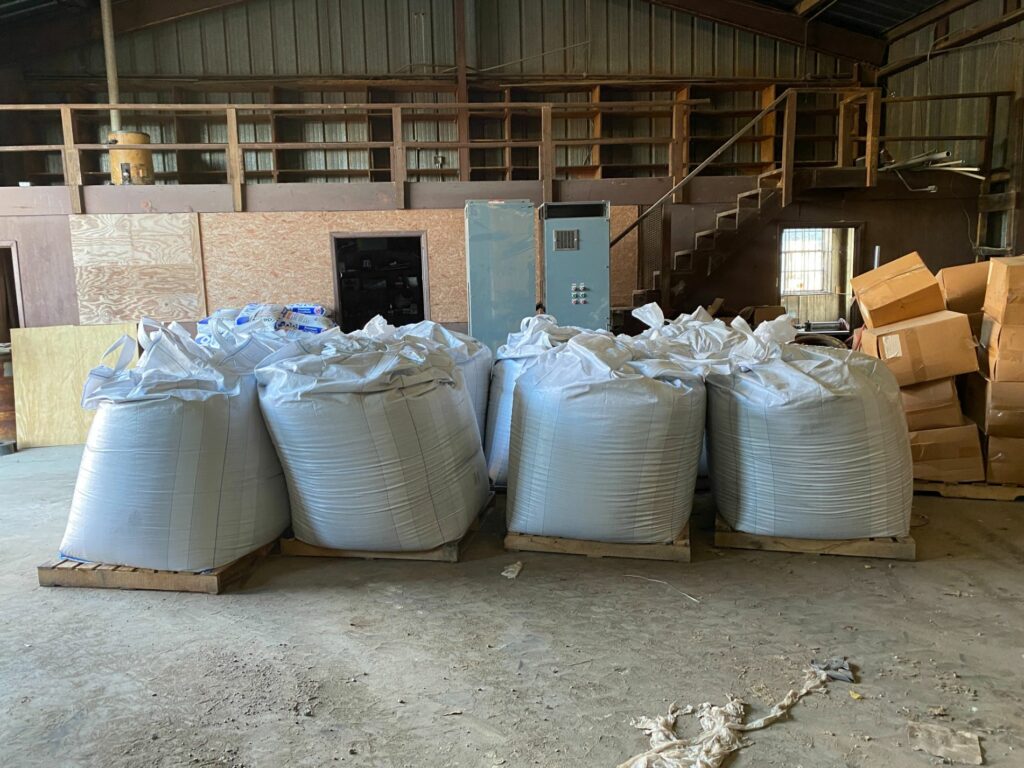
Brian Stuckey, the QC manager at the Brantley plant, said he “felt comfortable working the rubber into the mix.” Photo courtesy of Liberty Tire Recycling
Buzz Powell, the associate director at NCAT and a research professor at Auburn University, added, “The simplicity of sample preparation and the ability to use existing laboratory equipment allows the contractor to generate results quickly. Rapid turnaround of results is essential to BMD implementation. We want produced mix to resist both rutting and cracking. The preliminary BMD specification developed by ALDOT and used in this project requires a rutting test, (ALDOT 458 Hot Indirect Tensile Test), and a cracking test (modified IDEAL-CT, ALDOT 459 Alabama Cracking Test). ALDOT specifications also require a Tensile Strength Ratio (TSR) test to check for moisture damage susceptibility. The BMD specification requires a Hot-IDT strength not less than 20 psi and a CT-Index of 50 or higher. A contractor can have rutting and cracking data within four hours in their own labs, which saves time and money.”
Wiregrass Construction Co. Inc., headquartered in Dothan, Alabama, was the contractor for the project. Wiregrass, according to the website, uses “Alabama natural resources to produce asphalt and aggregates, which we then use in building the highest quality roads designed for the ultimate in safety and sustainability.” The company has 13 asphalt plants and five aggregate operations located throughout the state. For this project along County Road 110, they called on their Brantley team’s expertise.
“We used rubberized asphalt in the past, but it was from a terminal blend, where the rubber is added to the liquid,” said Steve VanDeventer, construction corporate/QC & quarry manager for Wiregrass. “You need a dedicated asphalt tank at the mix plant to hold the rubberized binder.
“I was curious about this job and went out to take a look. This rubber was added dry, using a fiber blower, and went in easily. It would be good to be able to use the blower machines more frequently, give them more work to do, we have a couple around the state at some of our plants.”
Brian Stuckey, the QC manager at the Wiregrass Brantley, Alabama, plant added, “Our BMD mix is a 12.5 mm mix and has 35% RAP content by weight of the mix. The asphalt content was 5.7%; 3.95% was our standard PG67-22 binder and 1.75% from the RAP. We used this same mix and added the SmartMIX.”
When asked how he developed the BMD for Wiregrass, Stuckey shared some insights. “I spent about a month and half learning about the BMD. I started with a 20% RAP blend that I was happy with the best crack and rut test results, then I mimicked that blend at a 35% RAP content. I found that mixes with high RAP contents and low virgin liquid contents need a soft grade of binder to get better results. Mixes with about 4% or better virgin liquid contents worked best. This was our third certified BMD since ALDOT decided to go ahead with it in about 2018. We used the BMD on plenty of the county P.O. mixes and commercial paving and parking lots. I felt comfortable working the rubber into the mix. We are seeing good quality mix and can use more recycled materials.”
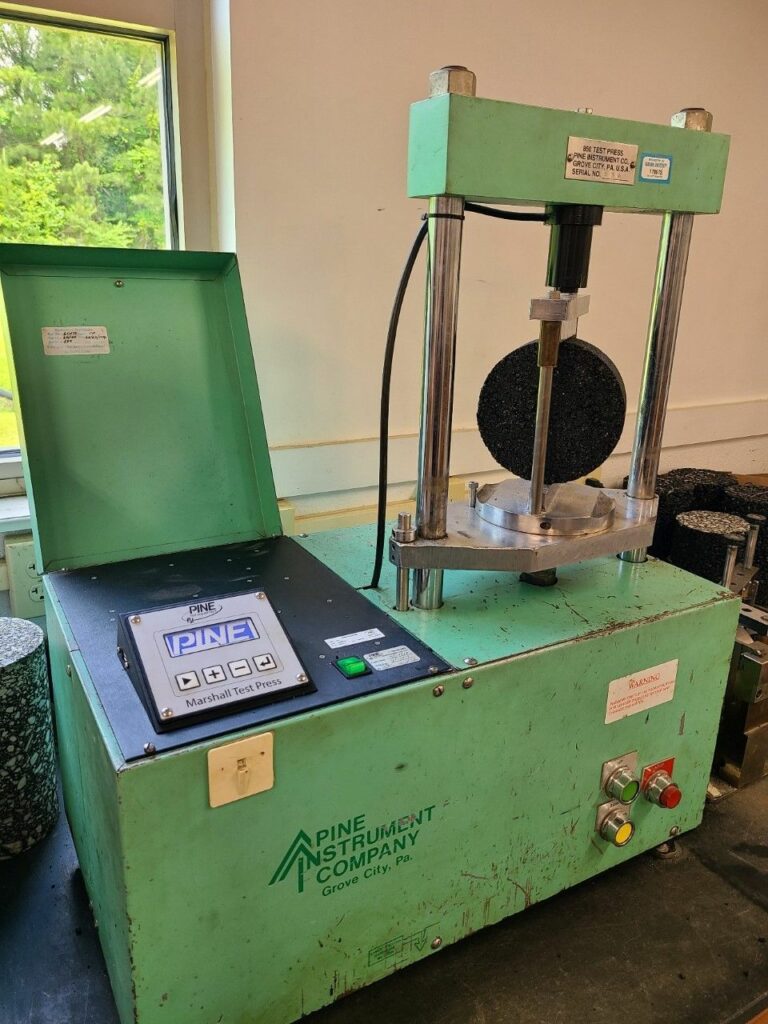
NCAT’s Buzz Powell explained one of the requirements for the BMD specification is a Hot-IDT strength test result of not less than 20 psi. Photo courtesy of NCAT
Lab Practices
Stuckey shared some advice on preparing the mix specimens for testing. “I proportion enough dry aggregate for two pills at a time and put it in the oven for about two hours at 325oF to dry the aggregate. Then I add the RAP and rubber, mix it in until it is evenly blended and put it back in the oven at 325oF until the temperature in the mix stabilizes, which takes about 10 to 15 minutes. Then I put it in our bucket mixer and add the liquid binder until the aggregate is well coated with no salt and pepper.
“One thing I learned is that I dry my RAP before mixing it to make the pills a little differently than NCAT does,” Stuckey continued. “NCAT spreads it all out on a table and fan dries for up to 24 hours, stirring it every hour, where I put it in the oven and stir and turn the mix over every 15 minutes until I don’t see any steam. I don’t have as much lab space as NCAT. That’s a nice lab.”
In the conversation about how RAP is handled in mix design and sample prep, Moore shared his thoughts. “I prefer to fan dry the RAP material for as long as it takes. There are some concerns that excess oven aging of RAP, which is already an aged material, could have detrimental effects on the performance of the mix in BMD testing. We follow the AASHTO standard procedure that requires a four-hour oven aging of the mix to simulate the short-term aging the mix will go through during production, storage, hauling and laydown. I know there has been a national discussion on aging procedures on RAP that needs to be resolved.”
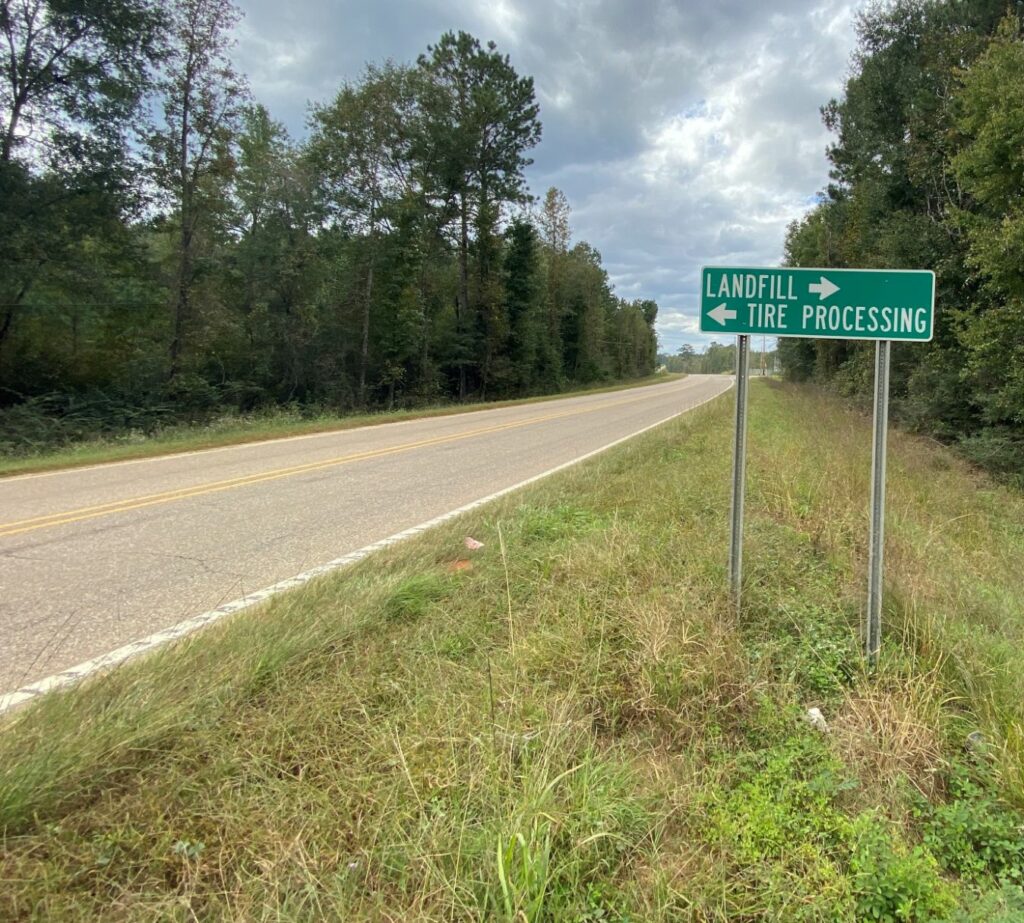
Paving Practices
Devon Donnell, the Wiregrass construction project superintendent commented, “I liked how the mix looked coming out of the paver. It laid a great mat and was easy on handwork, it blended in real good. This mix worked just as good or better than the regular mix. With the three different mixes on this job, I’m excited to see how the rubber mix will hold up long term, that will tell the tale.”
Chris Huner, ALDOT Troy area operations engineer visited the site and shared, “We are looking forward to seeing the performance of these mixes and test sections to help validate and implement the balanced mix design in our state system. I rode through the project a couple weeks ago and it looks good so far.”
After watching over the project for almost a year, Coffee County Engineer Marty Lentz and Chairman Smith recalled how the project came together.
“Since NCAT had just developed a simple BMD for the counties, we took advantage of an opportunity to use rubberized asphalt,” Lentz said. “The project was funded through the $1 fee that people pay on each replacement tire sold in Alabama. I think it put the tire money to good use to give our county a chance to evaluate the new BMD spec and SmartMIX rubber.”
“We wanted to see what it would take to diversify the recycling plant into the finer grinds of rubber for asphalt mixes,” Smith said. “I would like to see it go into roads. It makes sense. We are grateful to ADEM and the Scrap Tire Fund committee for funding our proposal to give the tire rubber a try and to help make the project happen. I heard at that recycling conference that one scrap tire is generated per person each year. In Coffee County, that would be about 50,000 scrap tires a year. We used about 1,750 tons of rubberized mix and 18,000 pounds of the SmartMIX additive, reusing over 1,500 scrap tires and over 600 tons of RAP. That is a decent amount of recycling.”
Doug Carlson is the vice president of asphalt products for Liberty Tire Recycling, Pittsburgh, Pennsylvania. For more information, contact Carlson at (412) 562-1700 or visit www.libertytire.com.
